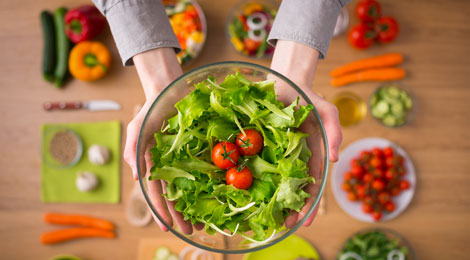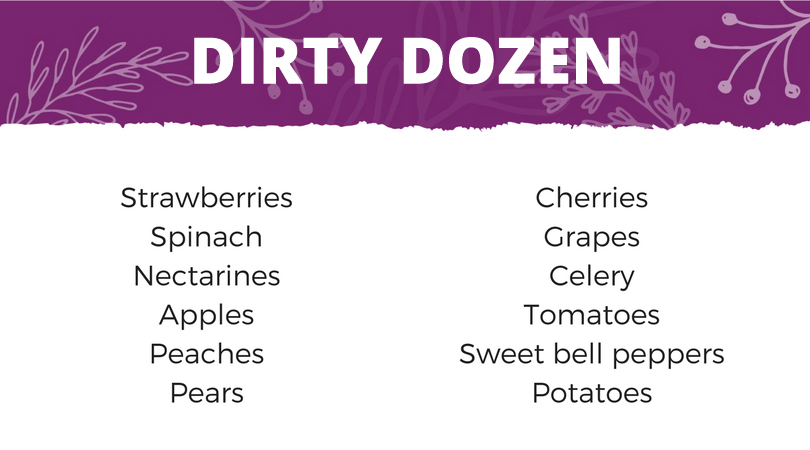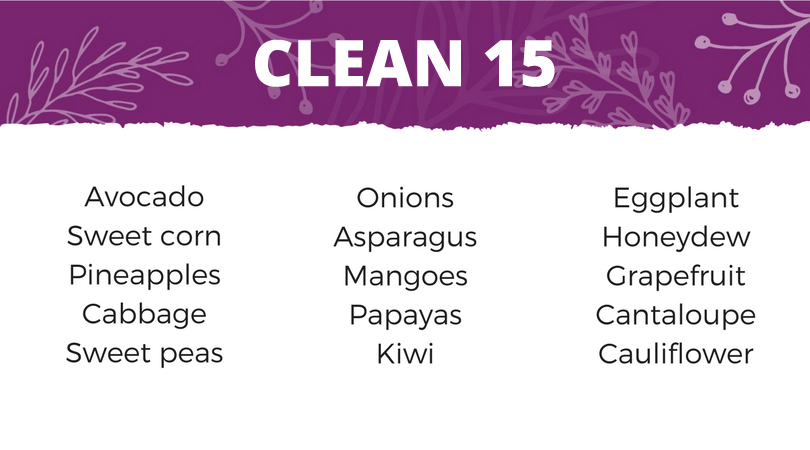The Clean Eating Basics You Should Know

Clean eating is a growing trend that focuses on eating whole foods and avoiding food items that have been overly processed. It stresses eating natural “real” foods over those with additives and unnatural ingredients.
But you don’t have to submit to a restrictive 21-Day or 30-Day regimen to get the benefits of clean eating. Here are a few clean eating basics and easy changes you can make when you commit to clean eating.
Start with the Perimeter
The outer areas of your grocery store feature whole foods like produce, dairy, bakery, meat and seafood items. For your clean eating basics, real foods with no added ingredients, you should start here.
But don’t completely neglect the center aisles. There are clean eating menu items to be found there as well, including whole grain cereal, canned items (beans, soups, fruits, vegetables), grains (brown rice, quinoa, whole wheat pasta), olive oil, teas, and frozen fruits and vegetables.
However, these pre-packaged, convenience items will include more ingredients. When you’re eating clean, a good rule of thumb is: the fewer ingredients, the better. Choose items from the center aisle with the shortest ingredient lists and, even better, choose items with ingredients you recognize and can pronounce!
Opt for Organic
Are you still a little confused about what organic food really means? Organic refers to products that are grown or processed without synthetic pesticides, bioengineered genes, or petroleum or sludge-based fertilizers. For organic livestock, this also means access to the outdoors and organic feed and without the use of antibiotics, growth hormones, or animal by-products.
Your grocery store most likely highlights their organic selection, but when in doubt check the produce sticker. Organic produce stickers include a 5 digit code that begins with “9.”
When you’re starting out with clean eating and organic produce, we recommend starting out with the Dirty Dozen. These foods are found to have the most pesticide residue. On the other hand, the Clean 15 are less likely to contain pesticide residue and conventionally grown produce options pose less harm.


Gluten-Free Eating
More than 18 million Americans suffer from gluten sensitivity which makes gluten-free eating a necessity and that can make shopping and meal planning a little more difficult. Gluten is a protein found in wheat, barley, and rye that helps foods keep their shape.
The obvious foods to avoid when you’re removing gluten from your diet include bread and other baked goods, pasta, and cereal. But gluten can hide in many foods. When you’re shopping, look over ingredient lists and avoid these gluten-containing ingredients: wheat, barley, rye, malt, brewer’s yeast, and oats.
The good news is that there are many naturally gluten-free foods that you can use to build a cleaning eating diet. These include vegetables, fruits, beans, seeds, meat, and seafood. You can also follow these gluten-free substitutions.

Buy Local
There is no standard for what “local” food means or how far it travels, but Stauffer’s features products that are grown and produced throughout Lancaster County.
When you purchase local produce, you are choosing a fresher and healthier option. Produce that is sold locally doesn’t travel as far, which means it can ripen in the field longer, instead of ripening as it travels, resulting in a fresher product. Additionally, fruits and vegetables that are grown across the country or internationally are losing nutrients as they travel between harvest and purchase.
Do you have other questions about the basics of clean eating? Ask us in the comments below or talk to one of our expert team members.
